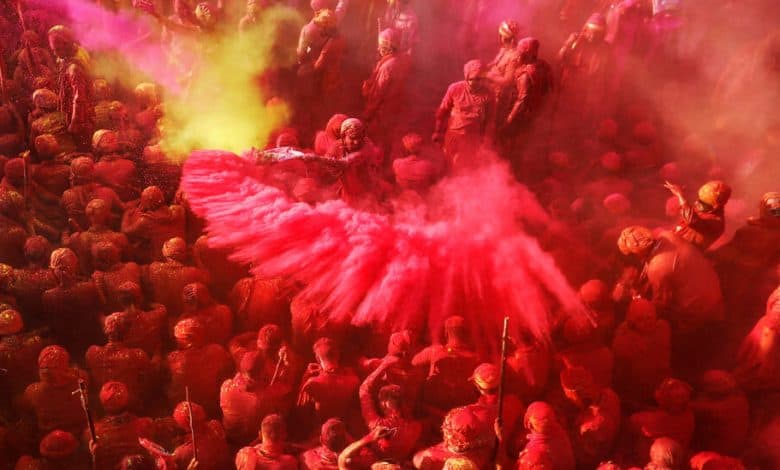What to Know about Holi, India’s Most Colorful Tradition

A rainbow haze swirls through India, where raucous laughter rings out as friends and strangers douse one another with fists full of pigmented powder. Holi is a Hindu tradition, an annual celebration of spring. In 2024, crimson, emerald, indigo and saffron clouds will hover over the country on March 25 for one of its most vibrant, joyful and colorful festivals.
“Playing Holi,” as Indians say, is an ancient tradition that has spread far beyond India’s borders. Here is what you need to know about the festival.
The revelry starts at sundown.
Holi (pronounced “holy”), also known as the “festival of colors,” starts on the evening of the full moon during the Hindu calendar month of Phalguna, which falls around February or March. It begins with the kindling of bonfires. People gather around the flames to sing, dance and pray for an evening ritual called Holika Dahan, which re-enacts the demise of a Hindu mythical demoness, Holika. All sorts of things are thrown into the fires, like wood, leaves and food, in a symbolic purge of evil and triumph of good.
From Delhi, Archie Singhal, 24, visits her family in Gujarat the day before Holi, when the fire is lit in the evening. The next morning, she prepares for the bursts of powder, called gulal, by applying oil on her body so the colors don’t stick to her skin. She puts on old clothes she doesn’t mind tossing.
Why the colors?
Holi’s roots are in Hindu mythology. The god Krishna, cursed by a demon with blue skin, complained to his mother, asking why his love interest Radha is fair while he is not. His mother, Yashoda, playfully suggests that he paint Radha’s face with any colors he wishes. So Krishna smears color on her so they look alike.
